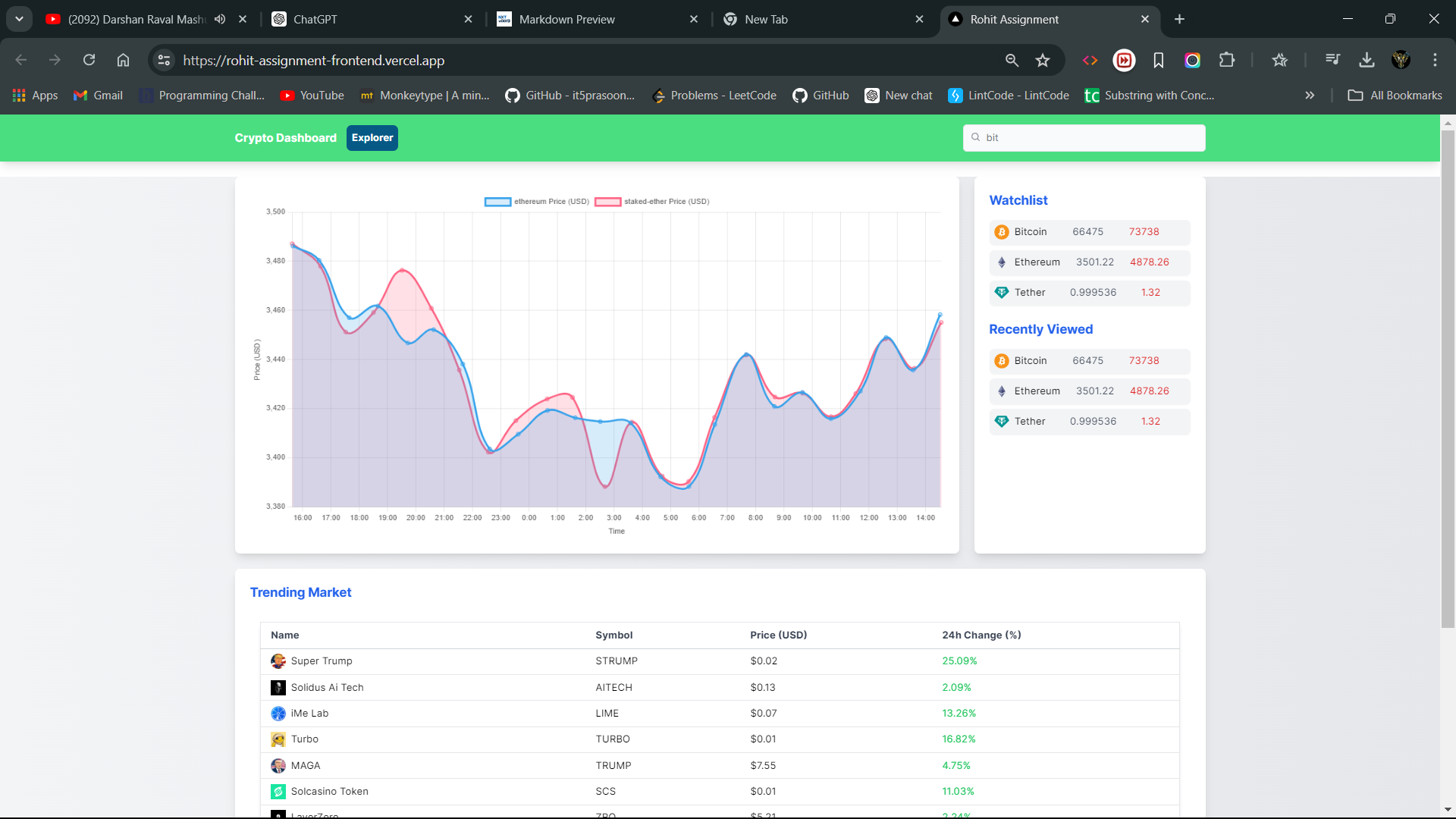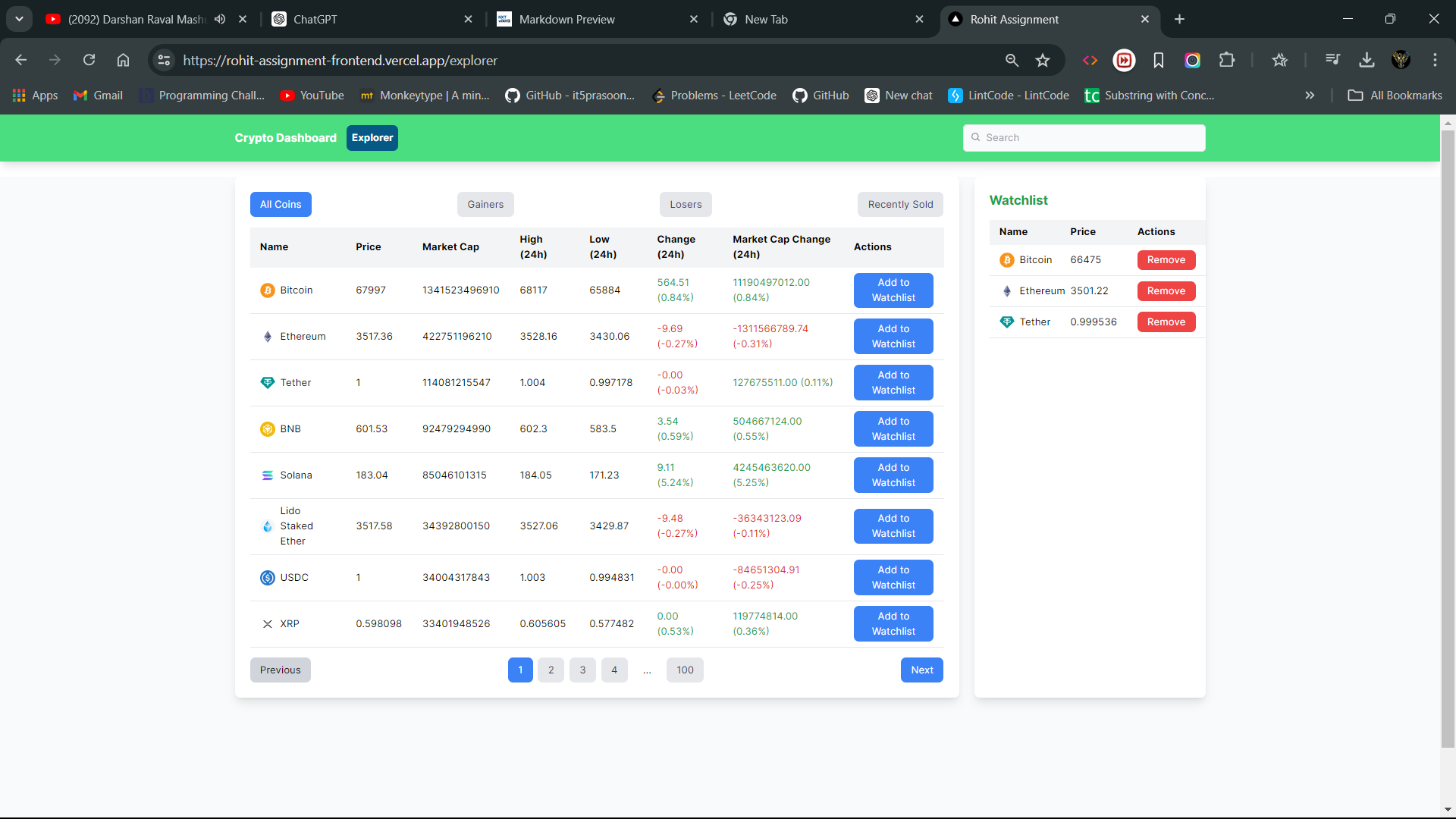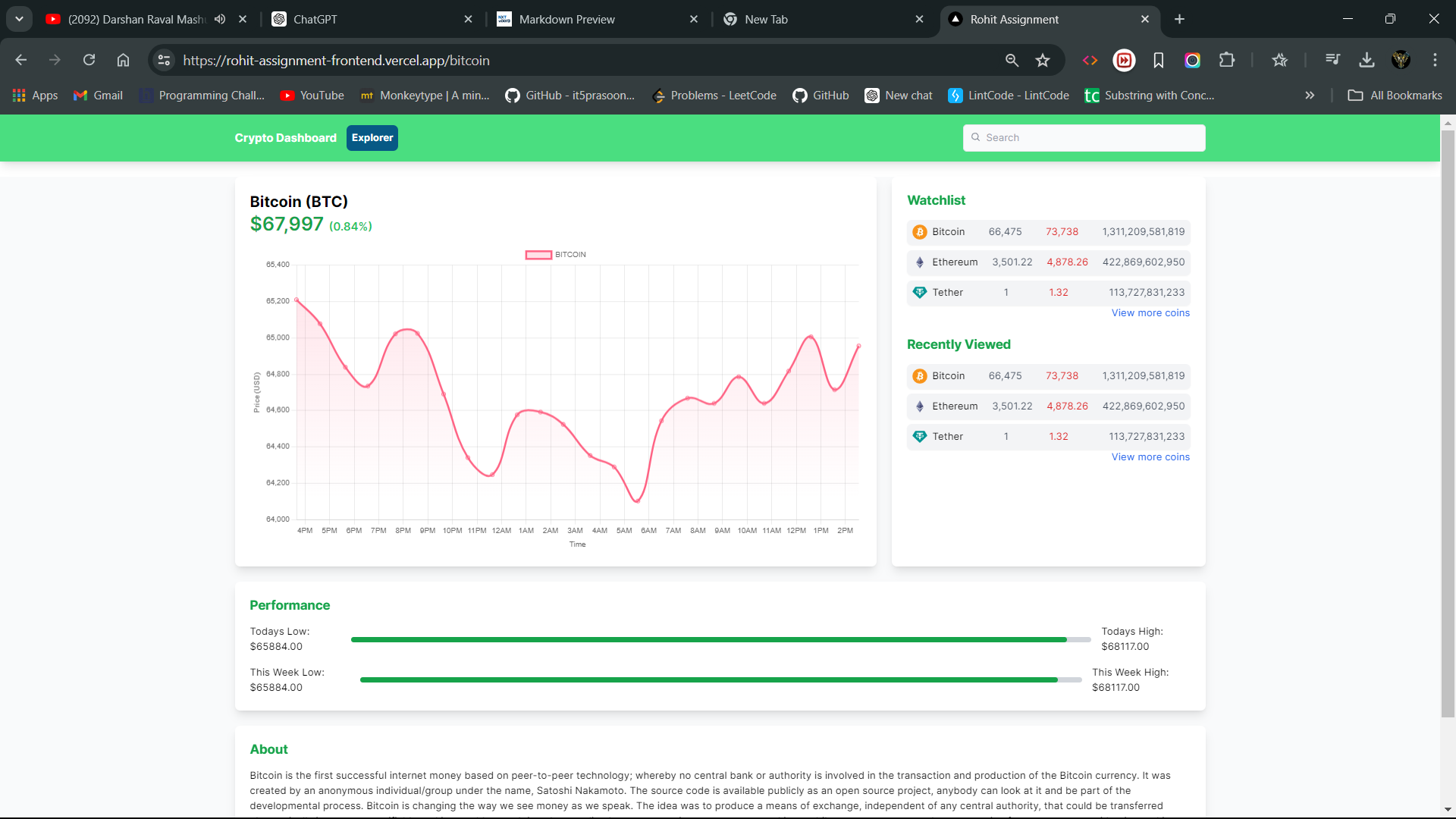This project is a web application for tracking cryptocurrencies, built using Next.js. It aims to provide real-time updates on cryptocurrency prices, detailed information on individual cryptocurrencies, and display global market trends.
- Develop a user-friendly web application to track various cryptocurrencies.
- Provide real-time updates on cryptocurrency prices.
- Offer detailed information on individual cryptocurrencies, including historical data and market trends.
- Frontend Framework: Next.js
- Styling: Tailwind CSS, Styled-Components
- State Management: Redux/Redux Toolkit
- Deployment: Vercel
Follow these steps to set up the Cryptonite application on your local machine:
-
Clone the Repository:
git clone https://github.com/Rohitrky2021/Rohit_Assignment.git
-
Navigate to the Project Directory:
cd Rohit_Assignment -
Install Dependencies:
Install the necessary dependencies for the project:
npm install
-
Run the Development Server:
Start the Next.js development server:
npm run dev
After running this command, the application will be available locally at http://localhost:3000.
- Global Market Cap Chart: Display a line or candle graph showing the global market cap data for cryptocurrencies.
- Public Companies Holdings: Display information about public companies holding Bitcoin and Ethereum.
- Paginated Coin List/Grid: Display a paginated list or grid of cryptocurrencies, with each page containing 20 items and navigation to load more.
- Navigation: Clicking on a card routes the user to the product page of the selected cryptocurrency.
- Basic Information: Display basic information about the selected cryptocurrency.
- Price Graph: Show a candle or line graph of the cryptocurrency’s price over time.
- Application Name: Display the name of the application.
- Search Bar: Include a search bar that shows suggested cryptocurrencies as the user types.
- Primary API: CoinGecko API for fetching real-time data and historical data.
- Additional APIs: Use additional APIs to fetch data on public companies holding Bitcoin and Ethereum (if required).
- API Key: Ensure to generate an API key and check the limits on requests per minute and per day.
- State Management: Use any state management library (Redux/Redux Toolkit, Zustand, Jotai).
- Loading, Error, and Empty States: Handle loading, error, and empty states appropriately.
- Folder Structure: Follow a standard, well-defined folder structure.
- Responsive Design: Ensure the UI is responsive and supports multiple screen sizes.
- Deployment: Deploy the working code on any website hosting platform (GitHub, Vercel, Netlify, Firebase).
- Third-Party Libraries: Avoid using utility libraries such as underscore.js, lodash, day.js.
- Graph Libraries: You can use a third-party library for line graphs.
- Caching: Cache API responses (with expiration) for all the pages.
- UI Creativity: Explore and use creativity to come up with a unique yet usable UI.
- Dynamic Theme Switching: Implement a dynamic theme-switching feature for toggling between Light and Dark modes.
- Server-Side Rendering: Utilize Next.js's server-side rendering capabilities.
- Search Bar Suggestions: Integrate a feature in the search bar to display recently searched items as suggestions.
- Mock Live Price Ticker: Simulate a live price ticker using a Pub-Sub mechanism, providing real-time updates on the product page.
Q: What happens if the API request limit is reached?
- If the API request limit is reached, the website may temporarily stop fetching new data until the limit resets. You may see a message indicating that the API limit has been reached and suggesting you try again later.
Q: What are the common API errors and rate limits?
- Common API errors include exceeding the rate limit, invalid API keys, and network issues. Each API provider has specific rate limits, which are typically documented on their website.
ThnakYou !



